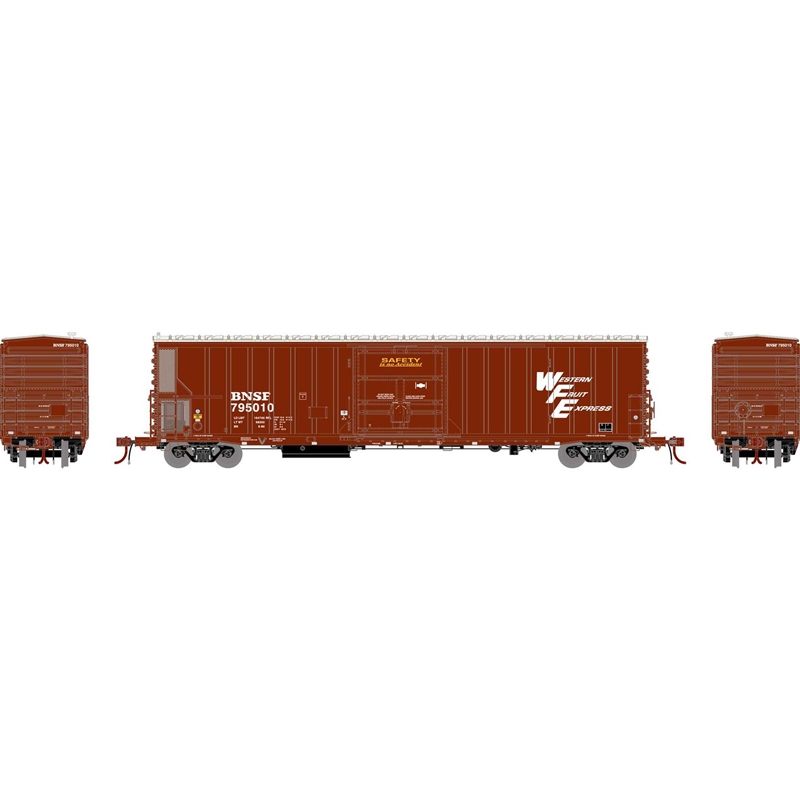Athearn ATHG66306 HO FGE 57' Mechanical Reefer, BNSF #795010
57’ MECHANICAL REEFER FEATURES:
- Available with onboard SoundTraxx sound
- Scaled from prototype manufacturer’s drawings and field measurements
- Repaints often vary by road number in the size and style of the reporting marks, car numbers and patch shapes
- See-through protective screens on the genset end
- Detroit Diesel 2-71 Genset visible inside
- End wall corrugation visible inside
- Inner refrigerator bulkhead
- See through end platforms
- Two different exhaust stack types: straight pipe with “flapper” or T-shaped “smokejack” per prototype and era
- Full underframe detail including Keystone cushioning, air brake reservoir, control valve, brake cylinder, brake plumbing, and fuel tank
- Factory applied end ladders and door closure rods
- Trainline hoses with silver ends
- Three different coupler cut lever styles per prototype
- Body-mounted or truck-mounted brakes per prototype
- McHenry operating scale knuckle couplers
- 100-ton roller bearing trucks with rotating bearing caps
- Fully-assembled and ready-to-run
- Accurately painted and printed for prototypical realism
- Highly-detailed, injection-molded body
- Machined metal wheels with RP25 contours
- Weighted for trouble-free operation
- Minimum radius: 18” — Recommended radius: 22”
PRIMED FOR GRIME MODELS FEATURE
- Duplicated look and feel of “In Service” equipment
- Faded base colors matched to the prototype
- Perfect starting point for adding grime and rust
PROTOTYPE SPECIFIC INFORMATION
One of the greatest freight car innovations of the 20th century was the creation of the refrigerator car, commonly referred to as a “reefer.” The ability to haul perishables such as fruits, vegetables and meat products across the country was a major factor in the development of modern America. No longer did food have to be produced close enough to urban areas, so that it could be consumed before spoiling. At the same time, areas with additional capacity for agricultural production could produce more food, since it did not have to be sold locally.
For many years, reefers relied on ice bunkers to keep loads cool. After World War II, technological advances made mechanical refrigeration practical for a freight car. In addition, a mechanical reefer could be larger than an ice reefer because of the greater cooling capabilities.
Fruit Growers Express owned the largest fleet of reefers in the East. FGE was owned by a group of ten railroads, with Atlantic Coast Line and Southern being two of the largest original owners. Many of FGE cars were built at its Jacksonville Shops, including these 57’ smooth-side mechanical reefers.







